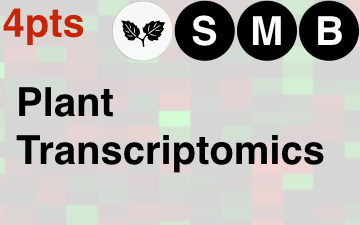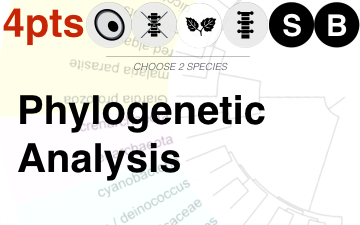Project Card

Cancer Research
PROJECT CARD
Sorry, there is no photo available. If you have one, please submit
here
.
Task: Study the genetics of human tumor development using a vertebrate model organisim.
Graphic by Wikipediacommons.wikimedia.org/wiki/File:HeLa-V.jpg
Cancer research is basic research into cancer to identify causes and develop strategies for prevention, diagnosis, treatment, and cure.[1] Cancer research ranges from epidemiology, molecular bioscience to the performance of clinical trials to evaluate and compare applications of the various cancer treatment. These applications include surgery, radiation therapy, chemotherapy, hormone therapy, immunotherapy and combined treatment […] read more

Plant Transcriptomics
PROJECT CARD
Sorry, there is no photo available. If you have one, please submit
here
.
Task: Study changes in gene expression that occur when plants defend themselves from pests and pathogens.
Graphic by Wikipediacommons.wikimedia.org/wiki/File:Heatmap.png
The transcriptome is the set of all messenger RNA molecules in one cell or a population of cells. It differs from the exome in that it includes only those RNA molecules found in a specified cell population, and usually includes the amount or concentration of each RNA molecule in addition to the molecular identities. The […] read more

Phylogenetic Analysis
PROJECT CARD
Sorry, there is no photo available. If you have one, please submit
here
.
Task: Infer the evolutionary relationships of different species by comparing their genetic sequences.
Graphic by Wikipediacommons.wikimedia.org/wiki/File:Simplified_tree.png
In biology, phylogenetics /ˌfaɪloʊdʒəˈnɛtɪks, –lə–/[1][2] (Greek: φυλή, φῦλον – phylé, phylon = tribe, clan, race + γενετικός – genetikós = origin, source, birth)[3] is the study of the evolutionaryhistory and relationships among individuals or groups of organisms (e.g. species, or populations). These relationships are discovered through phylogenetic inference methods that evaluate observed heritable traits, such […] read more

Common Garden Experiment
PROJECT CARD
Sorry, there is no photo available. If you have one, please submit
here
.
Task : Differentiate between genetic and environmental effects on plant traits such as growth and flowering time.
Graphic by Wikipediacommons.wikimedia.org/wiki/File:Arabidopsis_Thaliana_planted_in_Laboratory.JPG
Transplant experiment, also known as a common garden experiment (although this term is more plant specific), is an experiment where one or more organisms are moved from one environment to another environment. In a usual common garden experiment, two species of plants growing in their native environments would both be transplanted in a common environment. […] read more

Vertebrate SNP Analysis
PROJECT CARD
Sorry, there is no photo available. If you have one, please submit
here
.
Task: Identify genetic variation associated with psychiatric disorders using a single-nucleotide polymorphism (SNP) array.
Graphic by Wikipediacommons.wikimedia.org/wiki/File:DNA_microarray.svg
In molecular biology and bioinformatics, SNP array is a type of DNA microarray which is used to detect polymorphisms within a population. Asingle nucleotide polymorphism (SNP), a variation at a single site in DNA, is the most frequent type of variation in the genome. Currently, there are around 85 million SNPs that have been identified […] read more

Vertebrate Embryonic Development Study
PROJECT CARD
Sorry, there is no photo available. If you have one, please submit
here
.
Task : Determine the role of chromatin structure in embryonic development and its contribution to stem cell properties.
Graphic by Wikipediacommons.wikimedia.org/wiki/File:A_fly%27s_first_breath_2.png
Embryogenesis is the process by which the embryo forms and develops. In mammals, the term refers chiefly to early stages of prenatal development, whereas the terms fetus and fetal development describe later stages. Embryogenesis starts with the fertilization of the egg cell (ovum) by a sperm cell, (spermatozoon). Once fertilized, the ovum is referred to […] read more